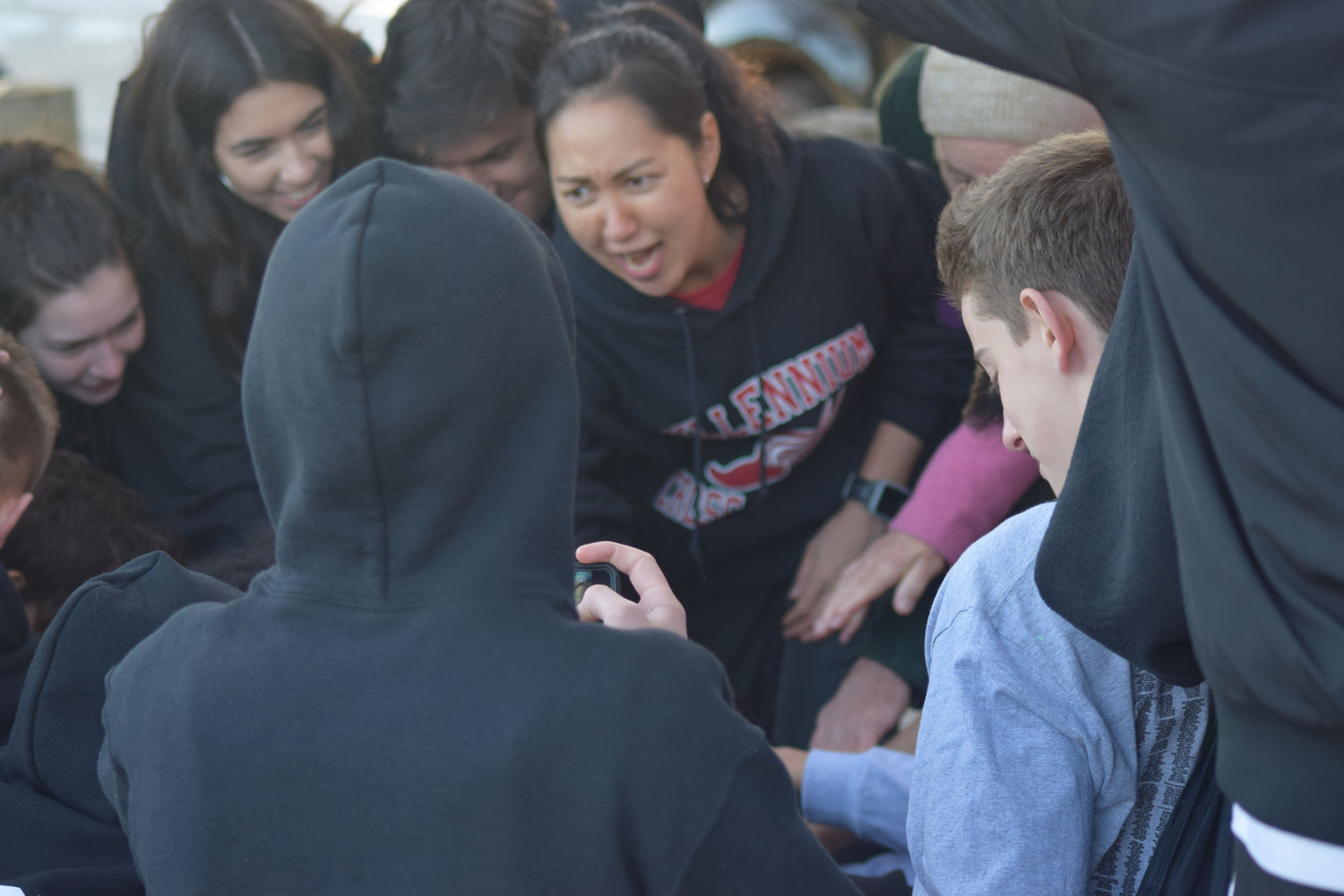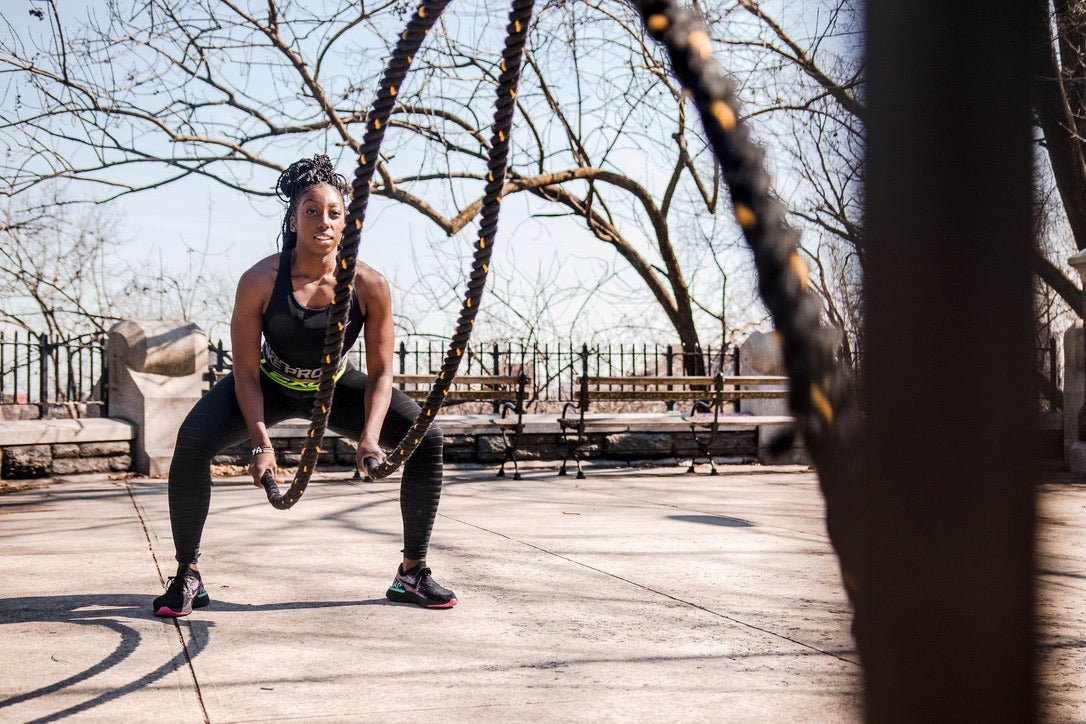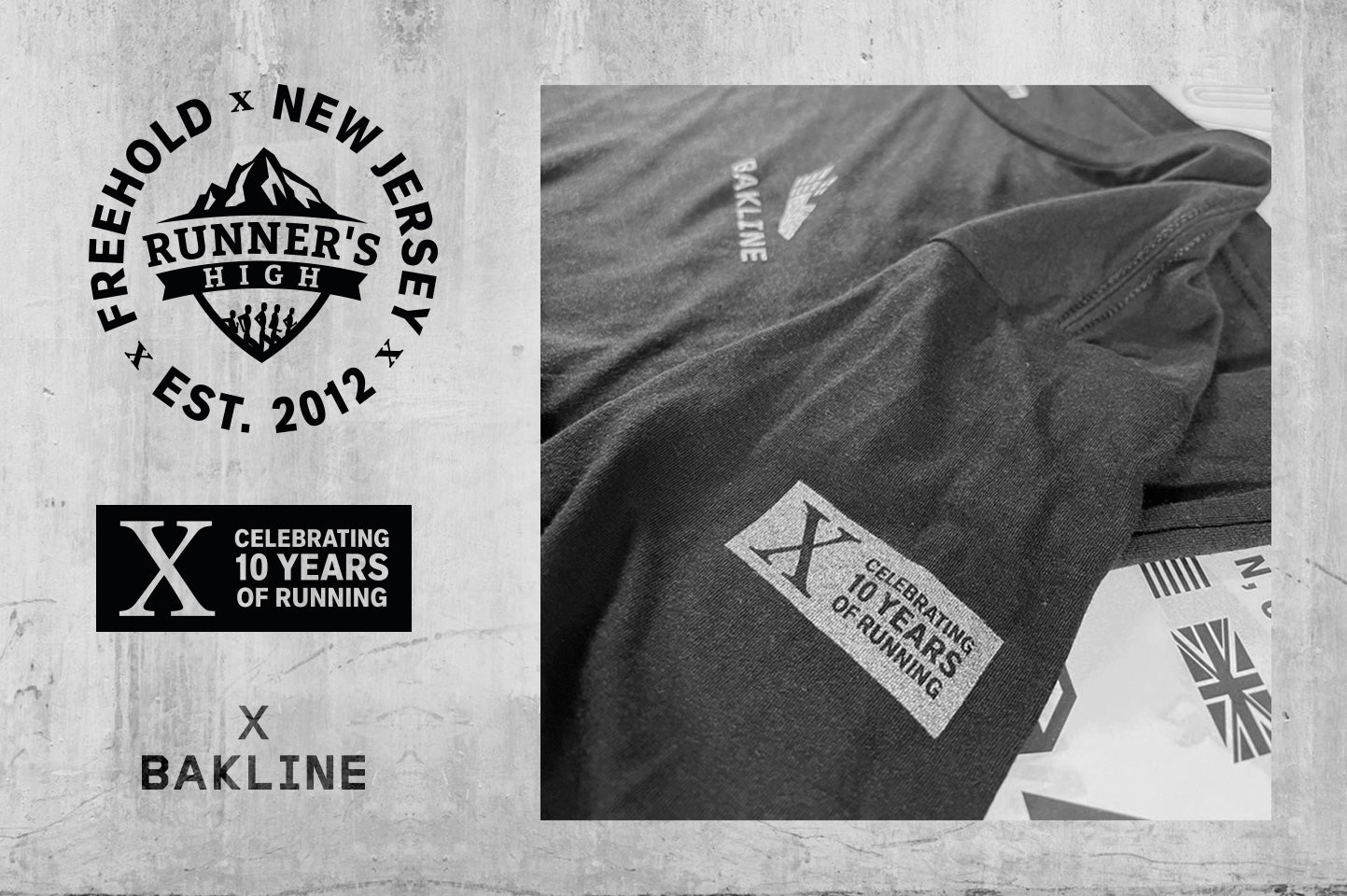Bakline's Future is Female Coaches series recognizes and celebrates the women in our sport who lead, inspire, and make us all stronger. In this series we talk to female coaches and leaders across a variety of disciplines within the running and fitness space about their experiences and insights as coaches, leaders, and game-changers.
This week we’ve interviewed Ayumi Nagano, head coach of cross country and track and field at Millennium Brooklyn High School. Ayumi's running journey began at age 12 and her experiences as a student athlete have shaped both her own running journey as well as her approach to coaching.
You can follow Ayumi at @coachnagano via Instagram.
How did you get your start in the sport? How has your involvement and interests changed over time?
I was on the bus to school in 7th grade and my friend asked me if I wanted to try out for the Cross Country team with her. I said yes, not really knowing what “Cross Country” was. I had always wanted to be able to play sports, but I attended Japanese school every Saturday from age 5-12 (end of 6th grade), and most sports have practice & games on Saturday’s so I was never able to join. I had no idea how much I would fall in love with Cross Country. Once entering high school, I went from having the best coach to the worst coach. That caused me to develop a more negative experience with racing in general. After high school, I decided not to run competitively anymore because of the distaste I developed towards races. I didn’t realize how traumatic my high school coach was for me, and how much it affected me. I ran casually from age 18-32 without having entered a single race. Those were the most pivotal years of becoming who I am today. I went through some extremely dark times, and running always got me through it. It allowed me to de-stress and find peace of mind when my life was nowhere near peaceful. I refused to run with a watch or measure the distance I ran because I wasn’t racing, so there was no point. I ran just for the joy and therapy it provided. After starting to coach, I felt inspired by my runners and started training for a 5 mile race in January of 2017. Since then I’ve been running NYRR races more consistently. My favorite distance is easily the half marathon.

Photo by Kaddy Tsang
What inspired you to start coaching?
I love teaching and I love running. I thought perhaps coaching would be a combination of the two. I love teaching because I love guiding students to reaching and realizing their fullest potential. I love running because it’s exhilarating. It’s something I do that allows me to move and relieve stress, and find peace of mind. It makes me feel strong and accomplished with my day. What better way than to do both through coaching!
Did you have any coaches in your athletic history who particularly shaped your experience of the sport or impacted your own approach to coaching?
Absolutely. My middle school XC and T&F coach was also my high school winter track coach. He emphasized unity, leadership, diligence and perseverance. With 100+ kids on the team in MS, he made each individual on the team feel special and welcome no matter what their speed. He saw in me more than I saw in myself. I remember in 8th grade XC, he awarded me the Coaches Award because he saw a leader in me. I never saw that in myself. My senior year of high school, I was Captain of the Winter Track team, which was my highest honor. I remember being shocked and surprised because I felt like I didn’t deserve it. But he saw that I did, and that, to this day, is one of my proudest running accomplishments.
As for my high school XC and T&F coach, he was easily the worst I’ve ever had. Of anything, he cared most about winning. I felt like a commodity. I remember the first time he ever had me run Varsity my Freshman year. It happened unexpectedly, and I was told just before the race started. I wasn’t emotionally or mentally prepared to race Varsity, and I was so nervous that I went out too hard and burned out too quickly. I ended up finishing dead last. And instead of understanding how terrifying that was for me, he expressed his annoyance by scoffing at me to go on my cool down jog. He made me feel like if I didn’t do and perform exactly how he wanted then I was worthless.
Regardless of how good or bad these experiences were, I am thankful for having both coaches as they have both influenced how I coach today. I have a better sense of how to unite a team in a sport that can feel like it’s a solo race. When I have a runner feel down about their race performance, my first question is always, “Did you try your best?” And if they say yes, then I always tell them, “Then that’s all that matters.” because it’s true. I try my best not to put emphasis on times, but rather, improvements. Not just on speed but also in their mindset, mental strength, injury prevention, slowing down on easy runs, being consistent with warm ups, cool downs and stretching. I’m trying to coach in a way that shows my kids the beauty of running.

Photo by Kaddy Tsang
As a high school coach, you’re working with athletes at a hugely influential point in their lives. What impact do you most hope to have on your athletes?
From running, I hope that my kids take away how truly capable they are of quite literally anything and everything. I know that sounds cheesy, but it’s the truth. Training is so hard. Speed work hurts so much. Your lungs are on fire and your legs feel like bricks, but you push through the pain anyway because if you want to get faster, you have to work for it. Speed isn’t just handed to anyone, even if they are considered “natural talents.” I always tell my kids the quote, “Hard work beats talent when talent doesn’t work hard.” It’s through their perseverance, dedication, diligence and consistency in their training, they can more concretely prove to themselves that they can do hard and challenging things. Isn’t that the most beautiful metaphor for life? The easy runs represent when you’re just smooth sailing through life. The speed work represents the days that are truly a struggle. We experience pain, frustration, exhaustion, and all the while our mind keeps telling us how much it hurts and that we can’t do it. We won’t make it. But we do! And we come out stronger in the end. Therefore, proving to ourselves that we truly are capable of anything and everything.
Team sports--especially in middle school and high school--have the power to shape how young athletes think about themselves and relate to each other. How do you approach building an inclusive and supportive team culture as a coach?
I try my best to incorporate team building exercises as often as possible during the first month. Name games, scavenger hunts, problem-solving games, relay games, etc. But the most important aspect while playing the games is to separate the cliques. High school very naturally has cliques of friends, and it’s very difficult to break them apart. Kids have their best friends, and for some, will do whatever it takes to always be with their friends. This creates segregation amongst a team, which is the opposite of what a team is. To create a more unified team, I’m intentional in creating groups when we play games. I very purposefully separate the cliques so that people will get to know the others on the team outside of their friend group. This can be as simple as having smaller groups stretching together (rather than stretching as a team) where I mix genders, grades and cliques. It can be a complicated algorithm, but pays off when each team member knows each other’s names and cheers for each other at every race because they very genuinely care for each other's success. Ideally, this is meant to make each team member feel valued. The second most important thing is selecting the right captains. The best captains aren’t the fastest runners on the team. They’re the ones who are the friendliest, most positive, diligent and confident. Being friendly is important because it allows for every team member to feel comfortable approaching them if they have any problems. Vice versa their warmth and outgoing personality has them innately approaching everyone on the team. Being positive is important because sometimes, times can be tough and we need them to very naturally always look on the brighter side of things to keep spirits up. Diligence because we need someone to lead by example - they show up early or on time to every practice and race and work hard every day. Confidence because they need to be able to call out team members if they are being disrespectful and to be able to approach me as a coach with suggestions, ideas or errors that I’m making. The Captains are meant to be the ultimate exemplar team member. An individual who inspires and positively influences the others. They also need to compliment each other. In XC, we have 2 female & male Captains and in T&F we have 3 female & male Captains. We try to create units of Captains that compliment each other to create a strong dynamic. For example, if one Captain tends to be slightly quieter, ideally, the other is a little more voluminous. Choosing Captains with these intentions helps the athletes see that being a leader isn’t about speed, but rather about character. This forces them to ask themselves and look at themselves about their own contributions to the team through their character rather than just on speed.

Photo by Kaddy Tsang
There is a sharp drop-off in participation in sports by young women--particularly women of color--in adolescence. What actions can coaches and runners take to keep girls engaged and ensure they have access to athletics?
Being aware of the fact that many young women of color either come from elementary and middle schools that didn’t have running programs, come from cultures where women playing sports is not supported or do not have the finances to purchase additional clothes like athletic wear. Every coach needs to be aware of this and know how best to support it. If a HS coach has a community of students that came from an ES or MS without a running program then they’ll need to have a program for new/developing runners like a running club. The goal of this program needs to be for the kids to develop a positive relationship with running. Perhaps starting with run/walk intervals and slowly building to running without stopping. Then running with the goal of completing a certain distance. Running is uncomfortable, especially to new runners, and that discomfort scares people away quickly. To keep the kids coming back, the coach needs to start where the kids are in their fitness.
If the student comes from a culture that doesn’t support playing sports there needs to be recruitment in the school and clear communication with the positive aspects of running, both with the students and parents. Not just the health and social benefits, but also academic benefits. Colleges like to see diversity of experiences in their applicants and participating in sports allows this. This conversation can at least allow the girl to begin participating. After she starts, she can decide on her own if she likes running or not. It’s also important to try and lead by example. I try my best to show that I am not only an Asian female teacher, but that I am also athletic. I created the Coach Nagano account specifically for that reason. Because representation matters and Asian girls need to see more Asian women in the running world. BIPOC in general need to be able to see themselves in the running world. If they do, they’ll more likely stick to the sport.
If finances are a challenge for the athletes then fundraising is important. It can be through a website or just simply by posting on social media that several team members need support in purchasing running gear. I have found that there are many people happy to donate, especially since it is more directly supporting someone. We have done team fundraisers and have been able to waive all team fees for students who have difficulty paying them. We’ve been able to get running shoes and clothes for team members as well. We have also reached out to brands who have been happy to donate gear to our team, specifically, our girls teams.
For girls, specifically, it helps to have a female coach because they are more aware of female politics. I hate that it exists at all, but it’s a reality that needs to be addressed. This is also why I’m so intentional about breaking up cliques. It is so that the kids get to know others on the team. Because the more they get to know someone, and have them just talk and find common interests, the nicer and more supportive they’ll be of each other. They don’t have to become best friends, but just develop a mutual respect for each other. And if they do become best friends, then even better! But if the cliques stay so clearly defined and segregated, that can cause tension and scare away potential runners. It’s important to be aware and intentional about tackling this segregation from day 1, especially because sometimes these cliques can be based on race. By intentionally creating an inclusive environment, it helps keep the runners engaged.
What are the most important steps to take in making distance running more inclusive as a sport? How can the running community address these with younger athletes?
We need to see more people of color in the sport. Before this past year, I couldn’t name one competitive Asian female distance runner. I know now only because I sought them out, but I shouldn’t have to do that. There needs to be more representation, but I am also aware that there are just less people of color in the distance running sport in comparison to white people. That is slowly changing though. To make it more inclusive, coaches need to receive training on the politics behind why distance running lacks diversity and resources on how to tackle those obstacles.
The running community needs to more aggressively support public schools in developing running programs. Whether it’s through donations, organizing events in high needs communities and schools, going to the schools and giving presentations and some swag during PE classes on the beauty of sports, etc. The seed needs to be planted that distance running is fun and that they are wanted out on the race course.
What areas of the sport have most evolved or improved in the time you’ve been involved?
I think the issue of eating disorders among women has been more aggressively addressed. When I was younger, it felt like the trend was the thinner you were, the faster you would be.
I grew up low income and was working as a cashier to help pay for my SAT math tutor and SAT English tutor in addition to anything else I needed, was feeling stressed about academics, playing sports and participating in the school dance competition. I was just extremely overwhelmed and ended up eating more than I needed to and gaining weight. I remember one day, during my Junior year of Track & Field, we were doing drills on the track. More specifically, knee highs. And my coach saw me and said that I needed to lose a bit of weight. That was the final push I needed when I was most vulnerable to become obsessed with losing weight. It developed into an eating disorder that I finally overcame in my mid-20’s. I’m happy to see that girls are being informed of the importance of eating balanced, healthy meals. The stories of professional female athletes being open and honest with their struggles with eating disorders and how it not only hurt their athletic performance, but also their overall mental, emotional and physical health has been a great movement towards developing a healthier relationship with food.
Additionally, thanks to the Black Lives Matter movement, the lack of diversity in distance running is finally being called out. I try my best to address this on my team, but it’s happening on a more global scale. I hope that this will help diversify the race course.



